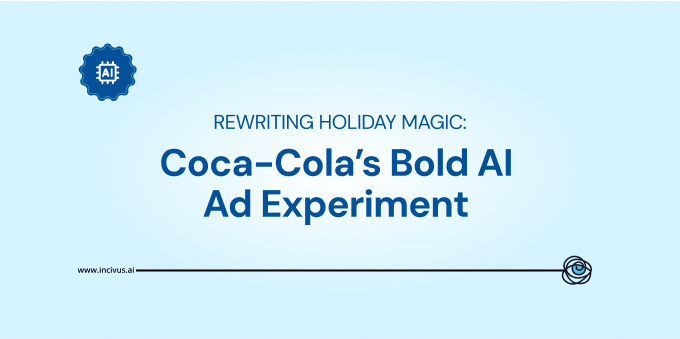The Creative Industry’s Revenue Problem
Creative directors face a persistent challenge: launching campaigns that generate extensive feedback about aesthetics while failing to deliver measurable business results. Teams frequently receive comments about color choices or brand perception, yet conversion rates, brand lift, and purchase intent remain stagnant. This disconnects stems from a fundamental misunderstanding, confusing creative opinions with strategic creative frameworks. This confusion represents a multi-million-dollar opportunity cost for organizations.
The Science Behind Effective Advertising
High-performing advertisements are not the result of creative intuition alone. They represent calculated investments built on validated frameworks and consumer psychology principles. With the advancement of generative artificial intelligence and predictive analytics, organizations can now validate creative concepts before launching rather than relying on post-campaign analysis.
C5i Incivus leverages predictive modeling and comprehensive consumer data to identify the fundamental differences between aesthetically pleasing content and revenue-generating creative assets. The result is advertising that transcends industry recognition to deliver sustainable business growth.
The Four Pillars of Revenue-Driving Creative
Drawing inspiration from proven business frameworks, high-performing advertisements create desire, enhance perceived value, and minimize friction in the customer journey. Here are the four critical components:
1. Strategic Visual Hierarchy: Controlling Attention Architecture
Visual hierarchy functions as a sophisticated guidance system, directing the viewer’s attention through a predetermined sequence. The placement of brand elements, the natural eye movement pattern, and the primary focal point of initial engagement all contribute to conversion probability. Advertisements that strategically control attention flow create a clear path to action.
Research Insight: Analysis reveals that advertisements incorporating upward visual motion increased optimism-related engagement scores by 19%. This represents applied consumer psychology rather than aesthetic preference.
2. Emotional Architecture: Engineering the Narrative Journey
Emotional engagement serves as a direct conversion catalyst rather than supplementary content. Advanced AI analysis demonstrates that top-performing advertisements follow a specific emotional progression:
- Opening with Pattern Disruption: Breaking expected viewing patterns to capture attention
- Building Relevance: Establishing relatable scenarios that resonate with target demographics
- Concluding with Clarity: Presenting clear value propositions and actionable next steps
This structure mirrors proven sales methodologies that begin with engagement, establish problems, demonstrate value, and present solutions.
3. Audio Psychology: Subconscious Influence Through Sound Design
Audio elements function as primary drivers of emotional response rather than background enhancement. Tempo, tonal quality, and sound design influence purchasing psychology at subconscious levels. Strategic audio choices can trigger specific emotional states including nostalgia, security, or urgency.
Research Insight: Incorporation of natural soundscapes increased authenticity perception scores by 31%, demonstrating measurable impact on brand trust.
4. Integrated Brand Presence: Building Trust Throughout the Experience
High-impact advertisements integrate brand elements throughout the entire experience rather than revealing brand identity at the conclusion. This approach follows the principle of value-first engagement, delivering substantial value through entertainment, insight, or emotional connection before presenting brand messaging.
Research Insight: Warm color palettes increased emotional connection metrics by 28%, establishing a positive brand association before product introduction.
Transitioning from Intuition to Intelligence
This approach enhances rather than replaces creative expertise. Creative professionals equipped with real-time predictive analytics transition from assumption-based decisions to data-informed iterations. This methodology mirrors how successful entrepreneurs approach offer development through systematic testing and optimization.
High-impact advertisements share characteristics with successful business offers:
- Clarity of Message: Unambiguous value propositions
- Market Desirability: Alignment with consumer needs and preferences
- Data Foundation: Decisions based on verified consumer insights
- Scalable Framework: Repeatable processes for consistent results
Validation Through Predictive Analysis
Organizations can now validate creative concepts before media investment through comprehensive audience analysis. Understanding what audiences will remember, share, and act upon before the campaign launch represents a fundamental shift in creative development methodology.
Next Steps: Experience predictive creative analysis through a comprehensive sample report that demonstrates how your next campaign concept would perform across key metrics before media expenditure begins.
Transform your creative concepts into validated revenue-generating assets through scientific, creative development. Don’t guess—predict. Try the Demo to validate your ad creative before launch.





